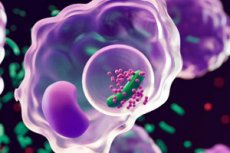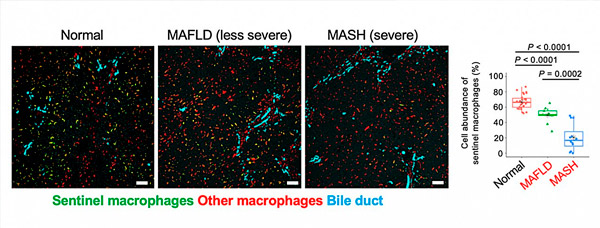
Researchers at Osaka University have discovered an important role for liver-resident macrophages in protecting against gut bacteria and related substances that enter the portal vein, especially when the intestinal barrier is compromised. These macrophages, called "signaling macrophages," are activated by isoallo-lithocholic acid.
This discovery holds promise for the development of preventive and therapeutic strategies for the treatment of chronic inflammatory liver diseases such as metabolic dysfunction-associated steatohepatitis (MASH) by enhancing the function of these macrophages to mitigate inflammation and improve treatment efficacy.
The liver and intestines are directly connected via the portal vein, a blood vessel that transports nutrients absorbed in the intestines directly to the liver. The intestines are home to many bacteria, and sometimes these bacteria and their associated substances can enter the liver via the portal vein.
This is especially problematic when the intestinal barrier is compromised, as occurs in conditions such as ulcerative colitis or leaky gut syndrome, allowing many intestinal bacteria and associated substances to reach the liver. Under normal conditions, the liver's immune system is able to defend itself against invading gut bacteria and related substances and prevent inflammation, but the exact mechanism has remained unclear.
Using innovative technologies such as in vivo liver imaging and single-cell gene expression analysis with tissue location information, a team of researchers led by Yu Miyamoto and Masaru Ishii from the Osaka University Graduate School of Medicine found that certain resident macrophages near the entrance to the liver protect it from gut bacteria and related substances.
Dr. Miyamoto, lead author of the study published in Nature, explained, "Our technologies showed that these 'signaling macrophages' play a critical role in protecting the liver from inflammation caused by gut bacteria and related substances."
In addition, the study found that isoallo-lithocholic acid (isoallo-LCA), a secondary bile acid produced by some gut bacteria, activates these sentinel macrophages.

Abundance of “liver sentinel macrophages” in normal and diseased human livers. Livers with metabolic dysfunction associated with fatty liver disease (MAFLD, less severe) and steatohepatitis (MASH, severe) are shown as diseased livers. Green indicates sentinel macrophages, red indicates other normal macrophages, and blue indicates the bile duct. Source: Yu Miyamoto.
With the rise of conditions such as leaky gut syndrome caused by modern lifestyles (stress, high-fat diets, and lack of physical activity), there is growing concern about inflammation affecting various organs, including the liver. Metabolic dysfunction-associated steatohepatitis (MASH), often accompanied by leaky gut syndrome, is of particular concern due to its ever-increasing prevalence and challenging treatment.
This study sheds light on how liver signaling macrophages protect against intestinal commensal invaders, offering hope that enhancing their function may lead to the development of new preventive and therapeutic strategies for chronic inflammatory liver diseases, including MASH.

